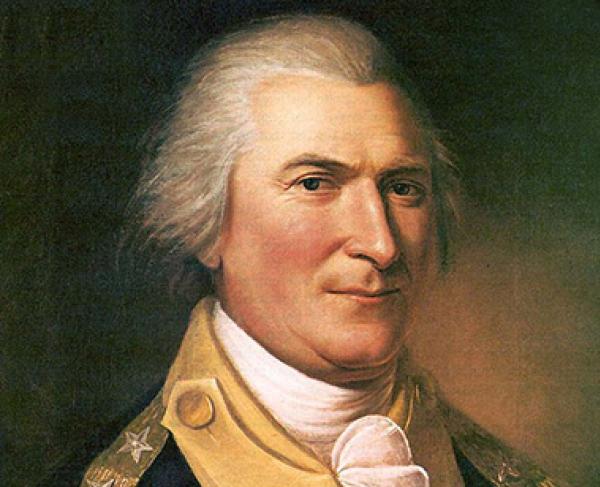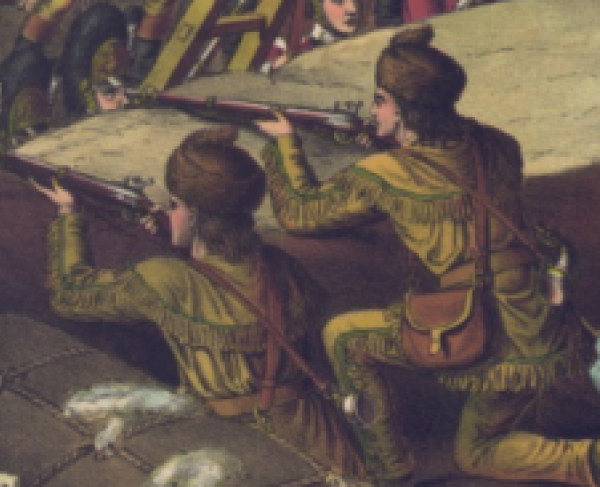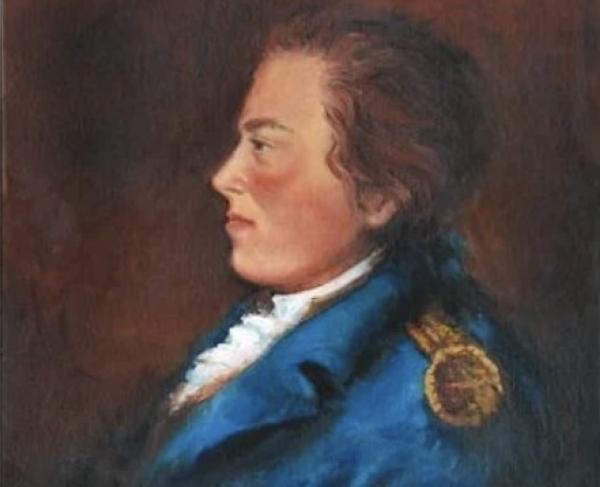Arthur St. Clair

Arthur St. Clair was born on March 23, 1736 in Thurso, Scotland. He briefly attended the University of Edinburgh and studied medicine before joining the British army in 1757—serving in America during the French and Indian War, before retiring in 1762.
St. Clair purchased land in Pennsylvania and was the largest landowner, west of the Allegheny Mountains. He was appointed as the assistant to the governor for the frontier areas of the colony and, also served as a member of the Westmoreland County Court, beginning in 1773. While in the position, he often dealt with the ongoing debate over whether Virginia would claim the Ohio Territory. Virginia wanted to claim Native lands by force. St. Clair advocated for peaceful relations with Native tribes instead of claiming their land as he hoped it would help Pennsylvania’s interests in the fur trade.
St. Clair was a supporter of independence and the patriot cause during the American Revolution. He served on his adopted county’s Committee of Safety and as secretary to representatives from the Continental Congress. The Congress appointed St. Clair to the rank of colonel in the Continental Army. On January 2, 1777 George Washington held a council of war to help him decide what to do in Trenton, New Jersey, knowing that the British were planning an attack. St. Clair, a newly promoted brigadier general and commander, suggested that the army move to Princeton, outflank the British, and capture the town—while other commanders suggested a retreat. St. Clair’s advice led to the defeat of the British at Princeton and prompted Washington’s support of St. Clair for the rest of the war.
Later in 1777, St. Clair was given command of Fort Ticonderoga in northeastern New York. Fort Ticonderoga was an integral part of the Continental Army’s defensive against a possible British invasion of New York via Canada. St. Clair stationed his men inside the fort and did not have troops guarding strategic locations around the fort’s exterior. The British stationed cannons atop Sugar Loaf Hill and bombarded Fort Ticonderoga, forcing an evacuation and allowing it to be claimed by the British. St. Clair was tried by court-martial for his actions at Ticonderoga, but was found innocent of all charges and was supported by Washington himself. St. Clair continued to serve in the military but was not placed in command of any strategic locations due to the debacle at Ticonderoga.
In 1787, St. Clair served as the president of the Confederation Congress, which appointed him as the first governor of the Northwest Territory. He negotiated the Treaty of Fort Harmar, which ordered Native Americans off their land and directed the construction of forts. St. Clair’s actions led to open hostilities with the native tribes. In October 1791, St. Clair led 1,400 men deep into the Ohio wilderness to subdue the natives. Washington advised him to “beware of a surprise.” On November 4, 1791, St. Clair’s men were attacked by a combined force of Miami, Shawnee, and Delaware warriors. The surprise attack succeeded in killing or wounding more than 900 of St. Clair’s men. Only a desperate bayonet charge led by St. Clair himself allowed he and his remaining men to escape the field. “St. Clair’s Massacre” stands as one of the worst defeats in American military history. Arthur St. Clair was condemned as “worse than a murderer” by President Washington and the massacre caused the first investigation of the executive branch under the new United States Constitution.
He was forced to resign from the army but remained governor of the Ohio Territory until he was removed by Thomas Jefferson due to his strong opposition toward Ohio becoming a state. St. Clair made vast investments in the Ohio territory, but never saw a return, and the United States did not reimburse him for expenditures he made as the governor of the territory. He returned to western Pennsylvania where he spent the remainder of his life in a small cabin after losing most of his fortune and land holdings. Arthur St. Clair died at the age of 81 in 1818.


